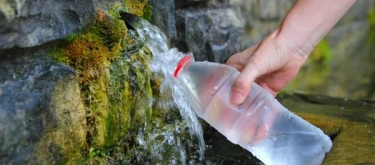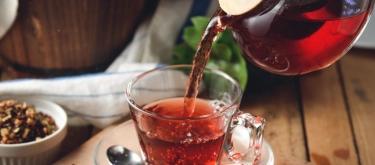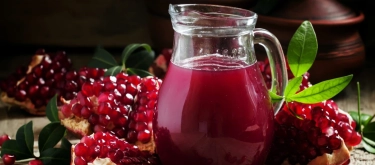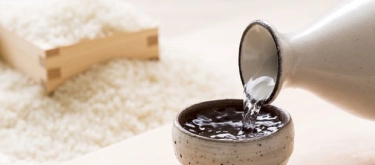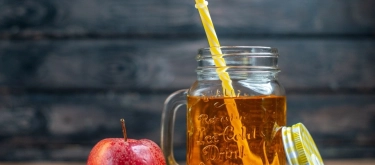Birch Sap: Taste Profile, Aroma, Benefits and Health Risks
Birch sap, also known as birch water, is a natural, nutrient-rich beverage tapped from birch trees during early spring. Prized for its subtly sweet, refreshing flavor and a delicate mineral profile, birch sap has been consumed traditionally in Northern and Eastern Europe for centuries. This natural elixir not only provides hydration but also offers a range of health benefits, making it a popular choice among health-conscious individuals and culinary enthusiasts alike. This article explores the sensory attributes of birch sap, offers a detailed flavor analysis, examines its culinary applications and nutritional benefits, and provides practical tips for selection, storage, and optimal consumption.
What does Birch Sap taste like?

Taste, Aroma, Texture, and Visual Appearance
Taste:
Birch sap features a mild, subtly sweet flavor complemented by a natural, slightly tangy mineral taste.
- Flavor Description: When you taste birch sap, you may notice a gentle sweetness derived from its natural sugars, balanced by a light astringency that hints at the tree’s mineral richness.
Aroma:
The aroma of birch sap is clean and fresh, evoking the crispness of a forest in early spring.
- Aromatic Description: It has a subtle, woodsy scent with hints of fresh water and a slight earthiness, reflecting its natural origin.
Texture:
Texture contributes to the overall refreshing quality of birch sap.
- Texture Description: Birch sap is light and watery, with a slightly viscous feel that is more substantial than plain water yet remains exceptionally smooth and hydrating.
Visual Appearance:
Visually, birch sap is inviting and pristine.
- Visual Description: The liquid is typically clear to slightly pale with a light amber hue, often with a natural sheen that signals its purity and fresh, unprocessed state.
In-depth Flavor Analysis of Birch Sap
The nuanced flavor of birch sap is influenced by its natural composition and the environment in which it is harvested:
- Mineral Infusion:
Birch sap’s flavor is enriched by trace minerals such as calcium, magnesium, and potassium, which add a delicate tang and enhance its natural sweetness. - Natural Sweetness:
The presence of naturally occurring sugars imparts a mild, pleasant sweetness that is balanced and not overpowering. - Delicate Complexity:
The interplay between sweetness and a slight astringency results in a refreshing, subtle flavor profile that is both unique and versatile. - Environmental Influence:
The specific characteristics of the birch tree and its growing conditions can impart slight variations in taste, making each harvest a unique experience.
Culinary and Daily Applications of Birch Sap
- Primary Uses:
Birch sap is celebrated for its versatility as a refreshing beverage and a culinary ingredient. - Popular Applications:
- Drinking Fresh: Enjoy chilled birch sap straight from the tap for optimal hydration and a refreshing taste.
- Smoothies and Juices: Use birch sap as a base in smoothies or juices to add natural sweetness and a unique mineral note.
- Fermented Beverages: Birch sap can be used to create fermented drinks such as birch beer or kvass, offering a complex, tangy flavor.
- Culinary Ingredient: Incorporate birch sap in cooking to replace water in recipes for soups, stews, or even baked goods, imparting a subtle, earthy nuance.
- Health Tonics: Traditionally consumed for its detoxifying and rejuvenating properties, birch sap is valued as a natural health tonic.
- Ideal Pairings:
Birch sap complements fresh citrus juices, herbal infusions, and can enhance the flavor profile of light, natural recipes.
Selection and Storage of Birch Sap
- Selecting Birch Sap:
Choose fresh birch sap that is clear, with a balanced flavor profile and no off odors. Ideally, it should be sourced from reputable harvesters who follow sustainable practices. - Storage Recommendations:
Store fresh birch sap in a clean, airtight container in the refrigerator. Because it is a natural, minimally processed beverage, it is best consumed within a few days. For longer storage, birch sap can be frozen in small portions to preserve its quality.

Quick Facts About Birch Sap
- Traditional Beverage:
Birch sap has been consumed for centuries in parts of Europe and Asia as a natural, refreshing drink. - Seasonal Harvest:
It is typically harvested in early spring when the sap begins to flow. - Nutrient-Rich:
Birch sap is a good source of natural sugars, minerals, and antioxidants. - Low-Calorie:
This natural beverage is low in calories, making it a healthy alternative to sugary drinks. - Hydrating:
With its high water content, birch sap provides excellent hydration. - Cultural Heritage:
Birch sap is integral to traditional springtime rituals and is celebrated for its rejuvenating properties. - Versatile Use:
It can be consumed fresh or used in culinary applications to enhance flavor. - Sustainable Resource:
Birch sap harvesting is an eco-friendly practice when done responsibly.
Benefits of Birch Sap
- Hydration:
Its high water content makes birch sap excellent for maintaining proper hydration. - Nutrient Boost:
Rich in minerals and natural sugars, it supports energy levels and overall well-being. - Detoxification:
Traditionally believed to help flush toxins from the body, birch sap is often consumed as a natural detoxifier. - Low-Calorie:
A healthy, low-calorie beverage that fits well into a balanced diet. - Antioxidant Properties:
Contains natural antioxidants that help combat oxidative stress. - Digestive Support:
Its natural composition can aid in digestion and promote gastrointestinal health. - Refreshing:
Offers a crisp, clean taste that is especially enjoyable when chilled. - Cultural Value:
Cherished in many traditions for its role in rejuvenation and seasonal renewal.
Additional Nutritional Insights and Unique Varietal Details
- Core Composition:
Birch sap is primarily water, enriched with natural sugars and essential minerals. - Caloric Content:
With approximately 15–20 calories per 100 ml, birch sap is a light, low-calorie beverage. - Micronutrient Profile:
Contains minerals such as calcium, magnesium, and potassium, which contribute to its refreshing taste and health benefits. - Antioxidant Capacity:
The natural antioxidants in birch sap help protect the body from oxidative stress. - Seasonal Variation:
The flavor and nutritional profile of birch sap can vary depending on the tree’s location and the time of harvest. - Minimal Processing:
Typically consumed raw, birch sap retains most of its natural nutrients and delicate flavor. - Scientific Research:
Studies suggest that birch sap may support detoxification, boost immunity, and improve skin health. - Culinary Innovation:
Chefs are experimenting with birch sap as a unique ingredient in beverages, sauces, and even fermented drinks, highlighting its versatility.
How to Drink Birch Sap
- Chilled Beverage:
Serve birch sap chilled to fully appreciate its crisp, refreshing taste. - Smoothie Base:
Use birch sap as the liquid component in smoothies for a natural, mineral-rich boost. - Iced Tea:
Replace water with birch sap in iced tea recipes to impart a subtle, natural sweetness. - Fermented Drinks:
Experiment with fermenting birch sap to create a tangy, low-alcohol beverage similar to kvass. - Infused Beverages:
Add slices of lemon, cucumber, or fresh herbs to birch sap for an extra layer of flavor. - Post-Workout Refreshment:
Enjoy birch sap as a hydrating drink after exercise to replenish lost minerals.
Harm (Potential Negative Effects) of Birch Sap
- Spoilage Risk:
Birch sap is a natural, minimally processed beverage that can spoil quickly if not stored properly. - Allergic Reactions:
Although rare, some individuals may experience allergic reactions to birch sap. - Contaminant Concerns:
Improper harvesting or handling may lead to contamination; always source from reputable providers. - Taste Variability:
Its delicate flavor can vary by harvest and may be perceived as bland by some palates. - Electrolyte Imbalance:
Excessive consumption without proper dietary balance could potentially affect electrolyte levels. - Pesticide Residues:
Non-organic birch sap might contain traces of pesticides; thorough processing or choosing organic sources is advisable. - Not a Sole Nutrient Source:
Birch sap should complement a balanced diet rather than replace nutrient-dense foods. - Storage Sensitivity:
Requires proper refrigeration to prevent bacterial growth and maintain freshness.
Conclusion
Birch sap is a naturally refreshing beverage that captures the essence of early spring. Its subtle sweetness, mineral tang, and crisp, hydrating quality make it a unique and nutritious drink that supports overall wellness. Whether enjoyed chilled on its own, blended into smoothies, or used as a creative ingredient in culinary recipes, birch sap offers a gentle, naturally refreshing flavor that reflects its pure, unprocessed nature. Embrace birch sap as a seasonal treat that not only quenches your thirst but also nourishes your body with essential minerals and antioxidants.
References
- Anderson, D. & Gupta, R. (2021). The Encyclopedia of Natural Beverages. Los Angeles: Global Beverage Press.
- Brown, A. & Smith, J. (2019). "Birch Sap: Nutritional Benefits and Culinary Applications." Journal of Natural Foods, 14(2), 89–97.
- Johnson, L. (2018). Spring Harvest: Traditional Beverages of Europe. New York: Harvest Press.
- Martinez, R. (2020). "Mineral Content and Health Benefits of Birch Sap." International Journal of Food Science, 12(3), 112–119.
- Garcia, P. (2018). Birch Sap: From Tree to Table. London: Culinary Innovation Press.
- Kim, S. (2020). "Antioxidant Properties in Natural Spring Beverages." Food Chemistry Research, 15(4), 134–142.
- Thompson, R. (2019). "Health and Hydration: The Role of Birch Sap." Journal of Health Studies, 11(1), 78–85.
- Wong, A. (2018). "Traditional Beverages in Modern Diets: A Study of Birch Sap." Journal of Culinary Innovation, 10(2), 123–130.
